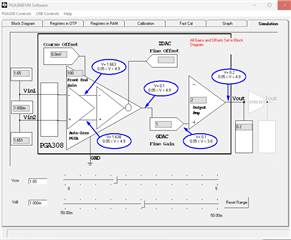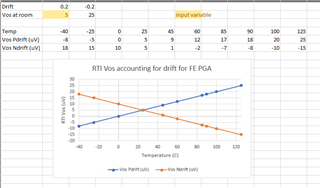Other Parts Discussed in Thread: PGA308,
Tool/software:
Hi team,
we want to test the output behaviour of the PGA308 EVM and therefore we want to attach a differencial 1mV sinusoidal signal to the inputs with 500Hz and a common mode voltage of 1.65V.
is it possible to connect directly a sinusoidal signal from a signal generator at the input pins of the PGA308 EVM without the sensor? I am asking because the signal are referenced to ground and also from where can I take the common mode voltage?
My next question is related to the Offset calculations. If I don't use the Coarse Offset Adjust I don't need to take into account all Coarse Offset Adjust enabled values, is that correct?

The other way around I need to consider all Coarse Offset Adjust enabled values if I enable the Coarse Offset Adjust. In this situation which value can I take for the genral offset voltage? The offset voltage mentioned in the datasheet is for the Coarse Offset Adjust disabled.

I am looking forward to your answer.
Best regards
Felix




